I'm trying for a divergent scale theme in mapview to help visualize gains vs. losses, with:
- point symbol circle sizes on an absolute value scale (to highlight losses as much as gains)
- a divergent color scale fill for the circles (say dark blue>blue>white>red>dark red for most negative>negative>zero>positive>largest)
- mouse over hover label of the original value retained
any ideas?
library(tidyverse)
library(mapview)
library(sf)
lat <- rep(34,16)
lon <- seq(-128, -126, length = 16)
value <- c(-1000, -800, -600, -400, -200, -100, -50,
-25, 25, 50, 100, 200, 400, 600, 800, 1000)
#make data.frame
df <- data.frame(lat, lon, value)
#make spatial object for mapview
df <- st_as_sf(df, coords = c("lon", "lat"), crs = 4326) %>%
mutate(value_abs = abs(value)) #value_abs intended for `cex` argument
pal <- mapviewPalette("mapviewSpectralColors") #from mapview doc. example
m <- mapview(df["value"], #sets hover over value as this column
cex = "value", #sets circle diameter scaling on this column
legend = TRUE,
col.regions = pal(100), #closest I found to a red-blue divergent scale
layer.name = "value")
m
In other words, I'm hoping for the pattern of points here below to be symmetrical with the left side as a mirror image of the right in size, but with blue circles at left, red at right, and still allowing the user to see the actual (non absolute) values (e.g. -1000) by mouseover.
attempts: switching cex = "value" with cex = "value_abs" yields warning: In min(x) : no non-missing arguments to min; returning Inf without any points drawn, or with cex = df$value_abs (no quotes), which makes uncolored, enormous points. I'm not planning on needing two legends - just one for either the circle size or fill, showing a min and max value like it does now, would be great.

